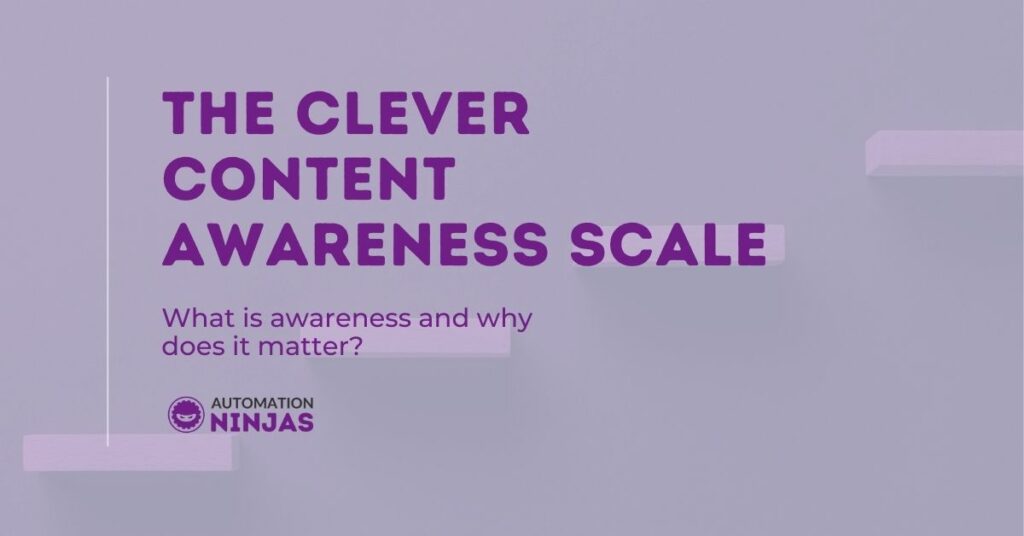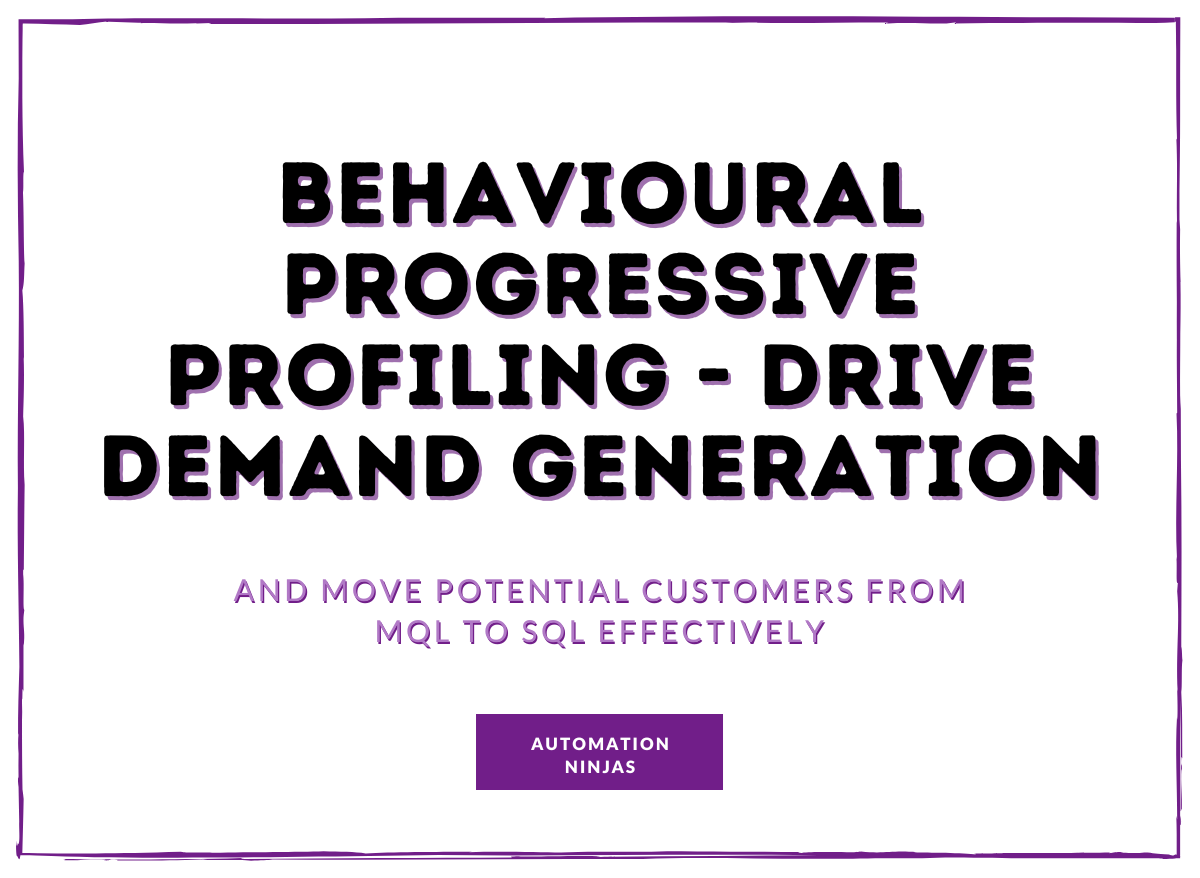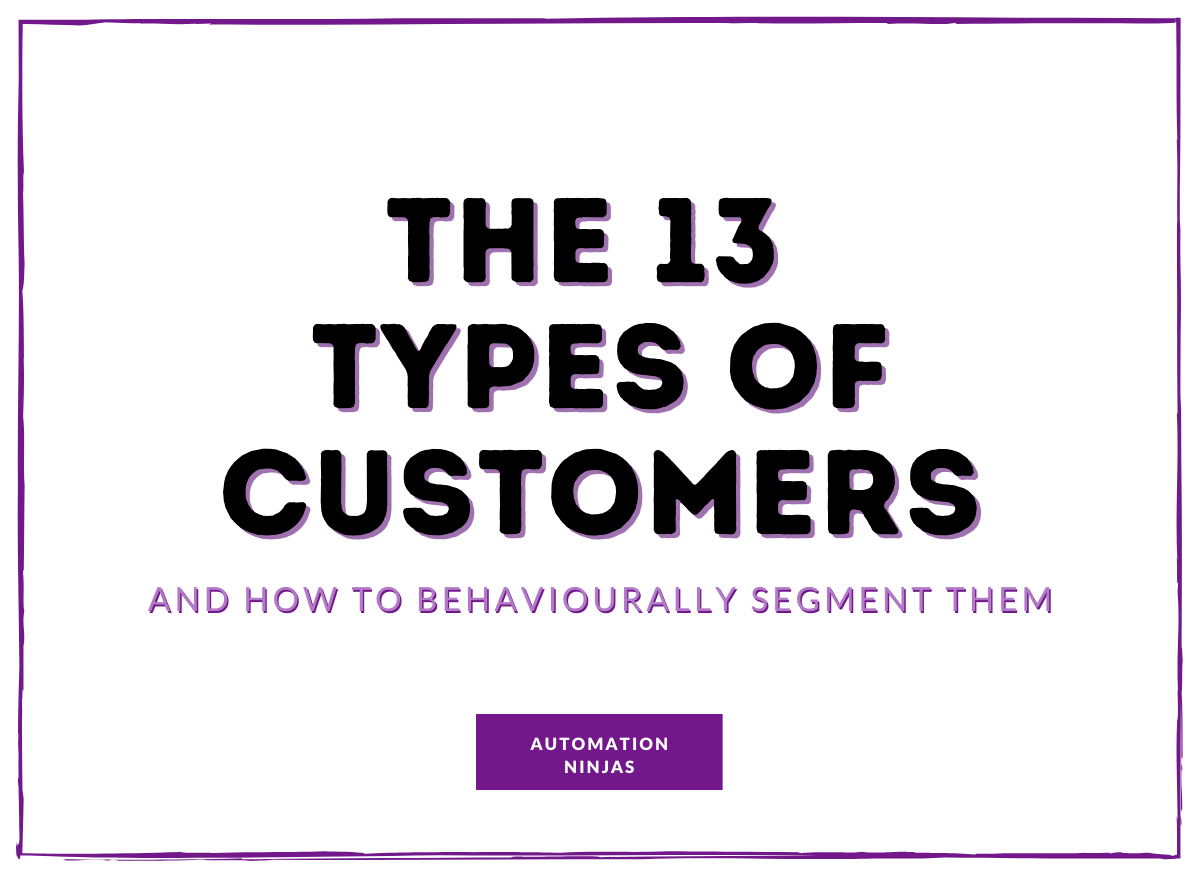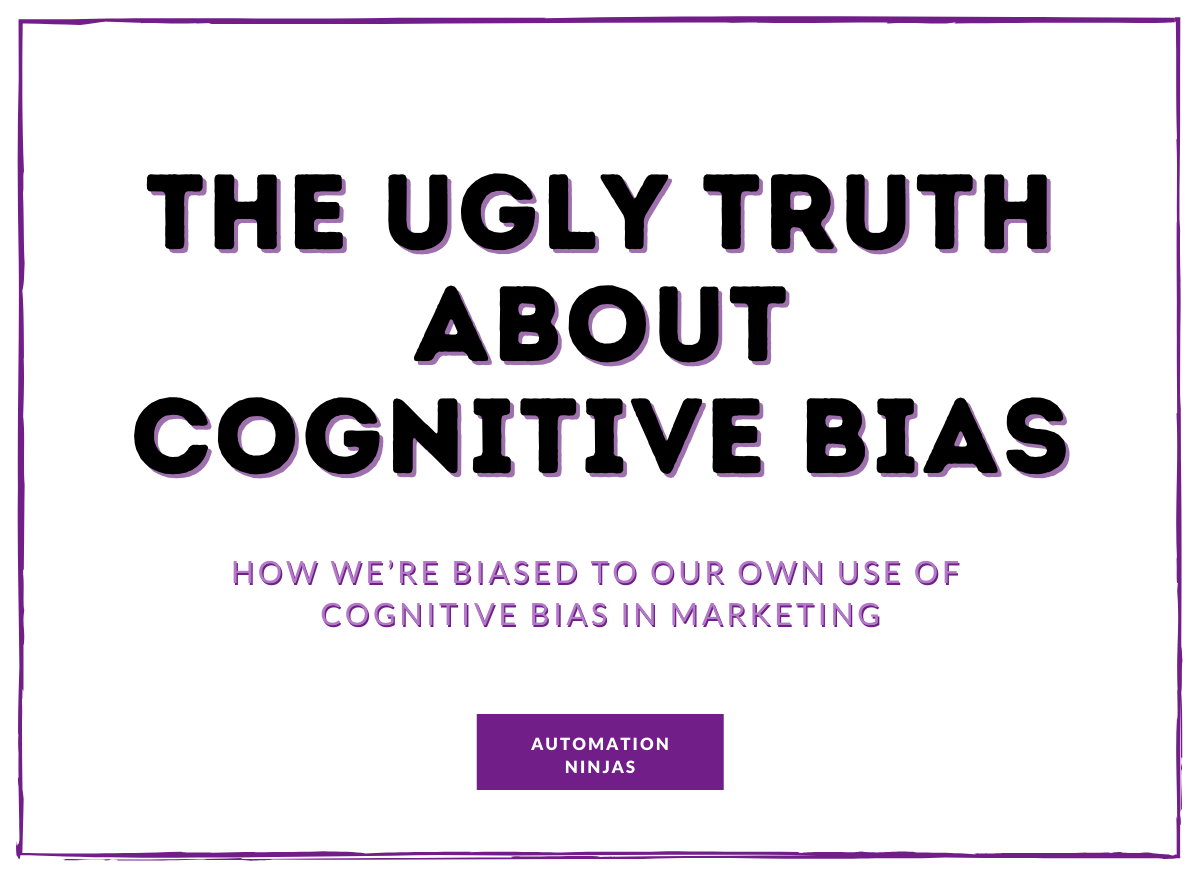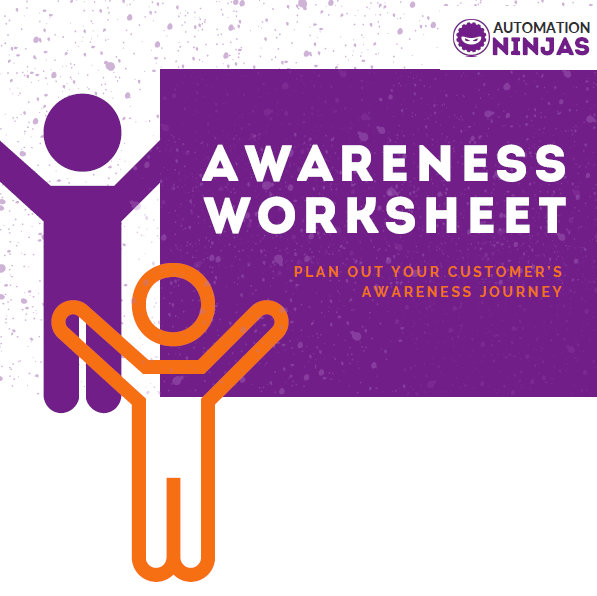Author: Ashton Oldham
Hey there, I'm Ashton, the Content Ninja with a penchant for creativity! I'm all about crafting killer customer-focused content and sprinkling it with that special sauce that makes brands pop. Teaching, strategising, organising (people and projects), and spicing up collaborations? That's my jam!
No business under the sun (or the moon) should create a content strategy without audience awareness sitting front and centre. If you don’t know why that is, you’ll soon be crystal clear. We’re going to have a good chat about awareness in this blog. And by the end of it, you can take the content awareness scale (nicely popularised by Eugene Schwartz) and implement it into your own business.
First, I want to ask you a very important question.
Do you really know your market?
Really knowing your market is the difference between being a forgettable business and a truly memorable business. It’s the difference between healthy profits and repeat purchases or paltry conversions. If you don’t put time and effort into getting to know your market, then all those potential customers will seek out a business that will.
You need to know the people that make up a market in relation to their wants, needs, interests, desires, motivations, beliefs, and objections (the list goes on). What’s more, you’ll need to know all of those things at each stage of awareness. More on awareness in just a minute.
Although people are unique, your ideal customers will have similarities. There will be trends within all of those categories listed above. This is great news. It means you can spend time constructing a marketing strategy, and more specifically, a content strategy that resonates with a whole heap of people. Your target audience.
When you are marketing to your target audience, you must remember that each person (or business) will not have the same level of awareness. They also won’t be at the same stage in their buying journey. This means blanket messaging will fail.
Your messaging, and therefore your content, has to be personalised and targeted using the content awareness scale.
This will help you:
- Know what conversations your customers want to have
- Give them the right information at the right time
- Join the conversation they are having in their head
- Provide what they want and what they actually need
- Build a positive relationship based on trust and understanding
- Increase traffic with content people are actually searching for
- Showcase the expertise and quality of your business.
So, shall we crack on with what awareness actually is?
What is Awareness: Introducing the Content Awareness Scale
The definition of awareness is “knowledge or perception of a situation or fact”
Wherever your prospect or customer is on their customer journey, their perception of your business and the solutions you offer, in relation to their problem, is what makes your business successful.
For example, if they had a negative perception, they wouldn’t purchase anything from you, and the cash money wouldn’t transact.
There are five levels of awareness, and where they are in that journey dictates what information you give them and whether or not you’ll get the conversion.
Here’s a nice awareness cascade graphic of the content awareness scale which you are welcome to steal and keep to refer back to. Print it out, make it your desktop background - whatever!
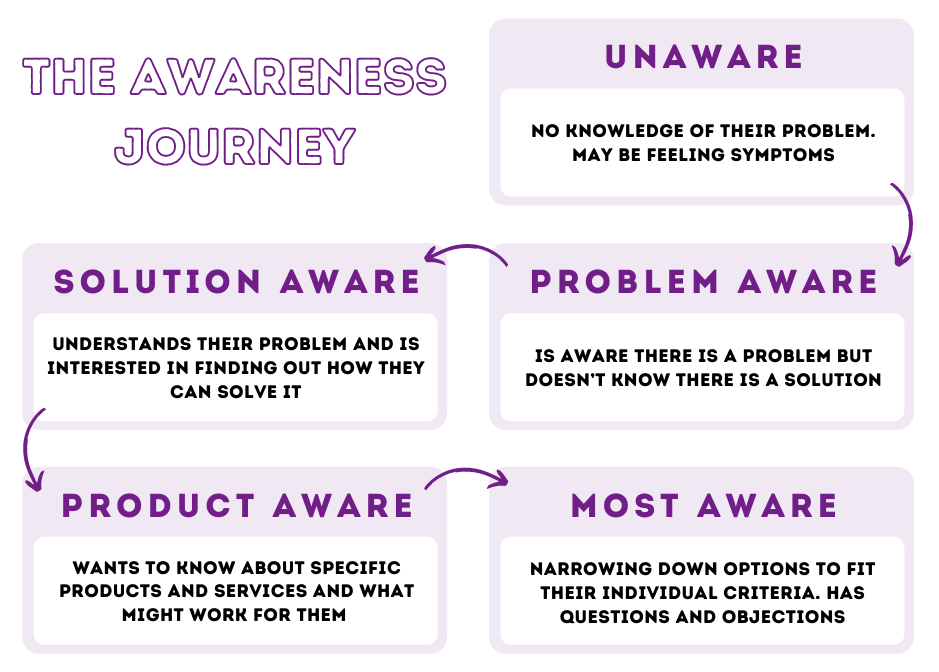
And here’s a little more detail just to help that really bed in
1. Completely Unaware
A person/business doesn’t know why they have a want or need for a specific product or service. Right now, they are just dealing with symptoms of a problem or general desires. They have zero ties to your brand or what you have to offer.
Your goal is to get them to be problem aware. Why? Because until they understand where those symptoms or desires stem from, they can’t move closer to knowing what they need to buy or why.
Every one of your potential customers will start off unaware. You have to create content that speaks to them at this stage. Otherwise, they might find the information they need from somewhere else.
The issue with that is they will begin building a positive relationship with whomever they got that useful information from. And that could well be (and like will be) your competition.
FYI, they are not looking to consume content about your company, your products or services, or any of the information you think will draw them in. That’s too far down the content awareness scale for this stage.
2. Problem Aware
Once you get them to be problem aware (well done btw), they are going to be far more motivated to find a solution. They’ve had an ‘aha moment’. Something (ideally your content) has shown them that there is a reason for the symptoms or desires they were feeling.
Now they need to understand that reason better. They need to get super duper educated on it.
Your goal here is to get every single question about their problem ironed out. Answer everything. Provide that educational, high-value content that will make them feel heard and understood by you.
You need to get them to the point where they are ready to be solution aware. Once they have consumed enough problem aware content, they will be gasping for a solution. Look for these triggers and move them into the next stage…
3. Solution Aware
No one likes to have a problem that there’s no solution for. After all, there’s a solution for everything, right?
Here’s where you dig deep into how to solve the problem. You know what they want, you’ve told them what they need, what’s next?
It’s time to lay out the options for them to see. Of course, your product or service will be included - unless you have figured out by now that they are probably not a right fit for your business. Which, by the way, some of them might not be.
The thing is, you can’t expect them to want to buy something at this point. They may want to, so a sale is possible, but more than likely, they’ll want to solve the problem any other way than having to dole out cash to do so.
But, as the expert, you’ll know that purchasing a product or service is going to be the best way to solve their problem. So, it’s time to get them product aware!
4. Product Aware
Ok, so now the prospect has caught on that there are a bunch of products or services that are the best bet for solving their problem. This means they are ready to start shopping (yaaasss!!!).
Because of all the awesome educational content they have consumed, they’ll be pretty clued up on what it is they need. That means they’ll have created a set of criteria.
Here’s where you can start to really showcase your business.
The prospect hasn’t really been interested in your product or service up to this point. But because you have done all of the groundwork with them, they are primed for content about what you have to offer.
They will be comparing what’s in the marketplace against the criteria they’ve created. It’s all about narrowing it down to a couple of options. Your content is going to help them do that… and yes, you’ll be trying your best to sway them towards your offering.
5. Most Aware
The final stage in the content awareness scale! The most likely place a prospect will be when they convert.
Here they are, ready to buy and very much keen to. They have chosen the solution they are most interested in and just need a little nudge to complete that purchase.
This is the last point at which they will turn away. They need to justify and validate the reasons to commit. There will be objections that you need to address. Case studies, testimonials and use-cases that you will want to provide.
Give them all that bottom-of-funnel information and let your sales team and sales content close the deal.

So, there you have the Content Awareness Scale in depth. I’m sure you can see now why audience awareness must guide your content strategy.
Content Awareness Scale: The 100 Audience Formula
Even if you aren’t entirely convinced, the 100 Audience Formula will show you precisely how to view your prospects and who may be slipping through the net if you aren’t considering their awareness.
For every 100 visitors:
3 are ready and keen to buy now (most aware)
6-7 are open to buying something (product aware)
30 think they’re interested in something (solution aware)
30 aren’t looking at specific products right now (problem aware)
30 are only just thinking about wants and needs (completely unaware)
Imagine you’re a toy maker and you sell bespoke wooden toys for £50 a pop.
Your website, blog and email content are relevant to the most aware, product aware, and solution aware stages.
(By the way, this is very commonplace - we encounter it in the majority of businesses we work with.)
Using the formula - you’d have 3 who are most aware, 7 who are product aware and 30 who are just interested. That’s around £2,000 in revenue if you have a 100% conversion rate at every stage (which is highly unlikely.)
But! You’re still missing out on a potential £3,000 more by ignoring prospects at the earlier stages.
When it’s in pounds and pennies, it suddenly becomes more important doesn’t it?
So, why does awareness matter? (If you still aren’t clear…)
Remember the points I mentioned earlier in this blog? Here are those almighty benefits of taking awareness into account again, just in case:
Know what conversations your customers want to have
Give them the right information at the right time
Join the conversation they are having in their head
Provide what they want and what they actually need
Build a positive relationship based on trust and understanding
Increase traffic with content people are actually searching for
Showcase the expertise and quality of your business.
Think about your audience. Where do you think the majority of them sit on the content awareness scale?
They’ll most likely be unaware, or problem aware when they take to the net and begin research.
Even if they are solution aware - and they’ve got to that point on their own - they may believe they know what sort of product they need (e.g. what type of paint to use, what rating of sleeping bag to buy, what level of dog training their dog requires).
But, actually they may be wrong, because they are basing that assumption on what they know at that point in time. By creating content to educate, you can support them with making the right decision.
You must create content for each stage of awareness to speak to the entire market.
Download our help worksheet to get going with mapping out each stage of awareness. You’ll get into the mindset of the audience, and the outcome needed to move them onto the next stage, and further down the funnel.

We’re always here to support you if you need any help implementing awareness into your content strategy. Success starts with starting - so crack on and see how you go!

